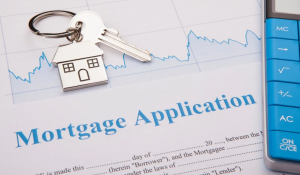 The Mortgage Bankers Association (MBA) has reported that applications rose 1.2% over last week’s total. Also on the rise was refi volume, increasing 4% over last week as more and more homeowners are taking advantage of still-record-low rates. The MBA’s Purchase Index decreased 4% from one week earlier.
The Mortgage Bankers Association (MBA) has reported that applications rose 1.2% over last week’s total. Also on the rise was refi volume, increasing 4% over last week as more and more homeowners are taking advantage of still-record-low rates. The MBA’s Purchase Index decreased 4% from one week earlier.
The refinance share of mortgage activity increased to 63.3% of total applications, up from 61.3% the previous week. The adjustable-rate mortgage (ARM) share of activity increased to 3.9% of total applications.
The FHA share of total applications decreased to 9.2% from 9.9% the week prior. The VA share of total applications increased to 12.0% from 11.7% the previous week. The USDA share of total applications decreased to 0.4% from 0.5% the week prior.
"Mortgage rates increased last week, with all loan types hitting their highest levels in two weeks. Rates were still lower than levels reported in late March and early April, providing additional opportunity for borrowers to refinance. Despite the 30-year fixed rate rising to 3.15%, applications for conventional and VA refinances increased. Ongoing volatility in refinance applications is likely if rates continue to oscillate around current levels," said Joel Kan, MBA's Associate VP of Economic and Industry Forecasting. "A decline in purchase applications was seen for both conventional and government loans. There continues to be strong demand for buying a home, but persistent supply shortages are constraining purchase activity, and building material shortages and higher costs are making it more difficult to increase supply. As a result, home prices and average purchase loan balances continue to rise, with the average purchase application reaching $411,400—the highest since February."
The U.S. Department of Housing and Urban Development (HUD) and the U.S. Census Bureau found that housing starts dropped in April 2021, hitting 1.57 million units, down 9.5% from March, but is 67.3% above the April 2020 rate of 938,000. One of the factors related to the dip in housing starts is the spike in cost of materials, as the National Association of Home Builders (NAHB) recently reported that the price of lumber tripled over the past year, forcing the price of a new single-family home to rise $35,872 on average.
Click here for more information on the MBA’s latest Mortgage Applications Survey.

 theMReport.com Your trusted source for mortgage banking news
theMReport.com Your trusted source for mortgage banking news








